Macedonia
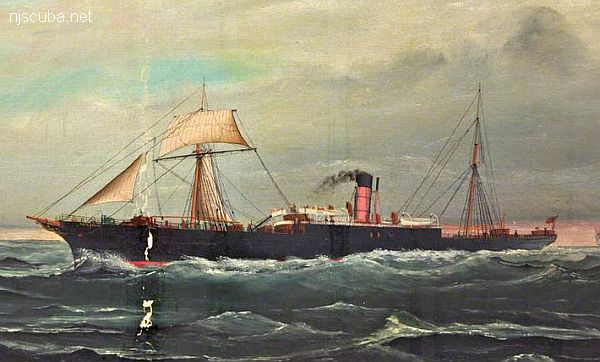
- Type:
- shipwreck, steamer, Germany
( at time of loss chartered to Ward Lines, see Mohawk ) - Name:
- Macedonia is a region in the southern Balkans, adjoining Greece, and formerly part of Yugoslavia.
- Built:
- 1894, England
- Specs:
- ( 280 x 41 ft ) 2268 gross tons, 19 passengers & crew
- Sunk:
- Tuesday June 13, 1899
collision with liner Hamilton ( 3127 tons) - 1 casualty - GPS:
- 40°21.418' -73°56.153' (AWOIS 1991)
- Depth:
- 60 ft
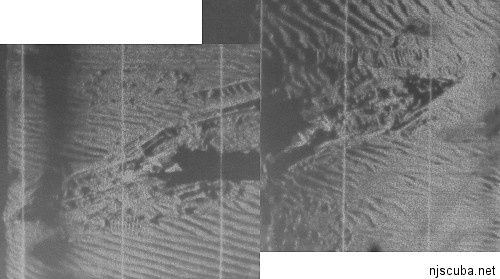
Composite side-scan sonar image, courtesy of the Artificial Reef Program. The bow is at the upper-right and the stern at the lower-left.

The Macedonia is a big wreck that lies more or less north-south and is completely contiguous. Most of the iron wreckage is low - 4-6 ft off the bottom, and jagged in spots. The debris field spreads out laterally quite a ways. Some of the hull plates have fallen inward, and present a smooth upper surface, while the entire west side of the wreck forms a large overhang.
I strongly recommend diving the aft or southern portion of this wreck, where the boilers, engine, driveshaft, and propeller make a line of interesting and easily navigated landmarks. The bow section of the wreck is low and disorganized, with no clear axis or terminus, and is much easier to get lost on. And you don't want to get lost on this wreck, because with the surface currents typically found in this area, a free ascent would not be advisable.
From the Concord Enterprise, 15 June 1899:
STEAMSHIP SUNK
New York, June 14. -- the old Dominion steamship Hamilton, which sailed from New York yesterday bound to Norfolk and Newport News, ran into the German steamship Macedonia off Long Branch, and the Macedonia subsequently sunk. The Hamilton was proceeding south with a large number of passengers. While proceeding at reduced speed and sounding her whistle, the Hamilton suddenly ran into a steamer, which proved to be the German steamer Macedonia, striking her on the starboard side abaft the engine and cutting into her hull about 12 feet. There was no loss of life.
from AWOIS: 1562
FE330SS/89 -- OPR-C147-HE-89; CONTACT #16 ON SURVEY H-10284/88; SIDE-SCAN SONAR AND DIVER INVESTIGATION FOUND A WRECK LYING ON A FLAT BOTTOM; WRECK IS AN OLD WOODEN STEAMSHIP ABOUT 75M IN LENGTH; WRECKAGE IS BADLY DETERIORATED AND STREWN ABOUT THE BOTTOM; SEVERAL PROTRUSIONS RISE ABOVE THE TREND OF THE WRECK; PNEUMATIC DEPTH GAUGE DIVER LEAST DEPTH OF 38 FT TAKEN ON THE STACK FROM THE STEAM PLANT WHICH IS LOCATED NEAR THE MIDDLE OF THE WRECK; STEAM ENGINE FOUND ABOUT 30M FROM THE STERN; NEAR MIDSHIPS THE ENGINE AND STACK RISE ABOUT 20 FT OFF THE BOTTOM AND TWO LARGE BOILERS ARE INTACT JUST FORWARD OF THE STACK. (UPDATED MSD 6/91)

Hamilton's twin sister Jefferson, both built 1899, of the Old Dominion Line. Both vessels were involved in incidents and mishaps throughout their careers.
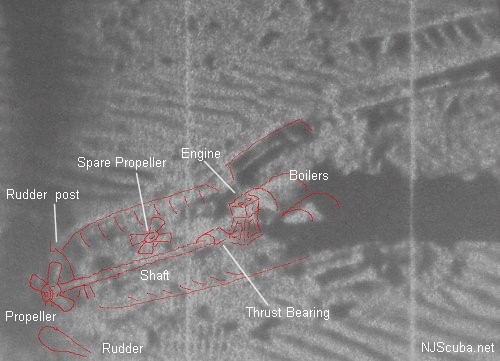
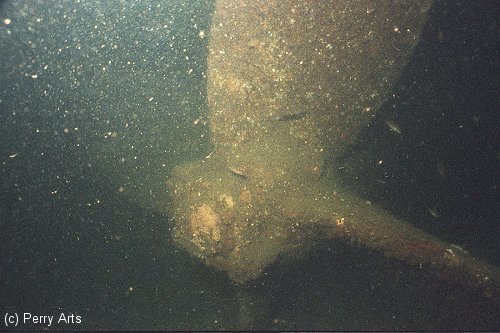
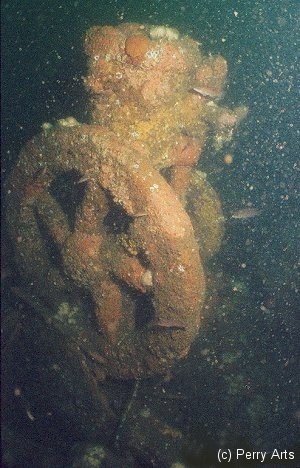
A flywheel on a small auxiliary steam engine. A piece like this, commonly known as a "donkey engine", might be used to raise and lower the anchor or power the cargo booms.
Diving here can be a different kind of experience. Current and visibility depend greatly on the tide and are probably best around dead high. You may descend through pea-green water into almost complete blackness, so any dive in this area should be planned as a night dive, regardless of the time of day. Visibility is often poor. On the other hand, on a clear bright day, this must be one of the prettiest wrecks in the area.
Hydroids and patches of white encrusting coral cover the huge rust-orange boilers and engine, where schools of big Blackfish can be found, as well as hordes of Cunners. I am told that years ago this was a good lobster wreck, but I have never seen a large lobster anywhere in this vicinity. The bottom is clean pebbly sand, scoured by the currents. The cargo of sugar dissolved away long ago, leaving little for artifact hunters, although occasionally a piece of brass still comes up.
The wreck of the Macedonia lies within the boundaries of the Sandy Hook Reef.
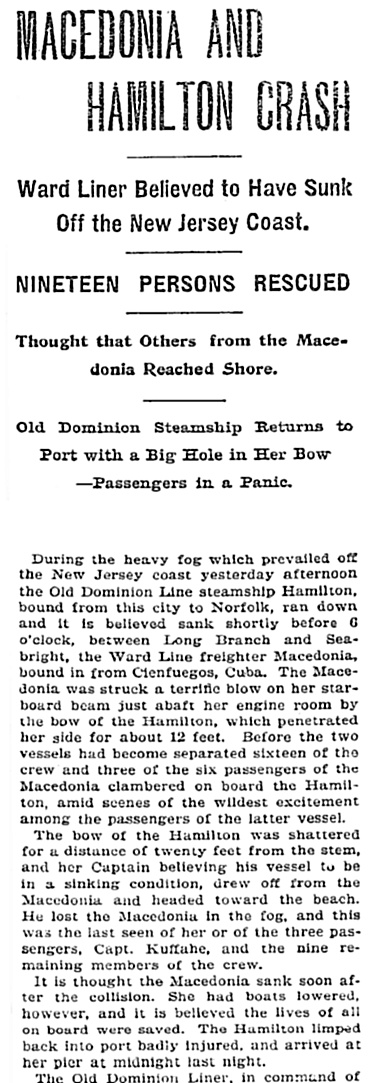
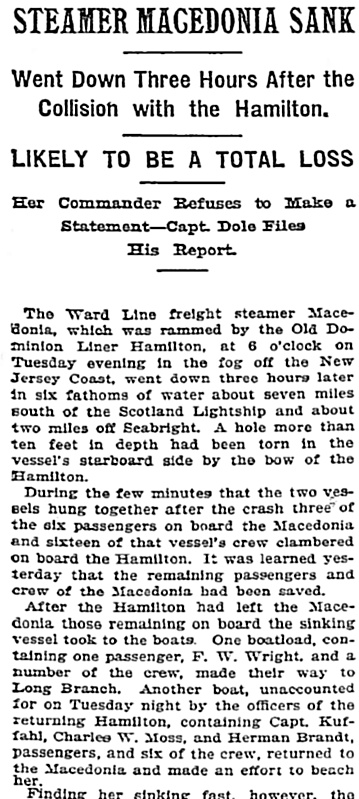
Underwater photos courtesy of diver Perry Arts.
Side-scan Sonar image courtesy of the Artificial Reef Program.
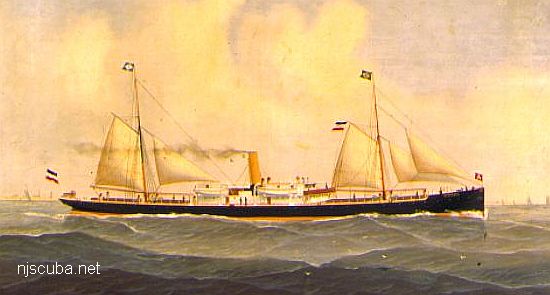
There do not seem to be any images of this ship prior to sinking. If anyone knows of one please share it.

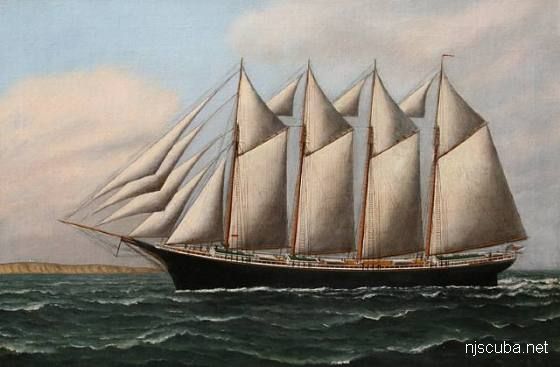
Questions or Inquiries?
Just want to say Hello? Sign the .